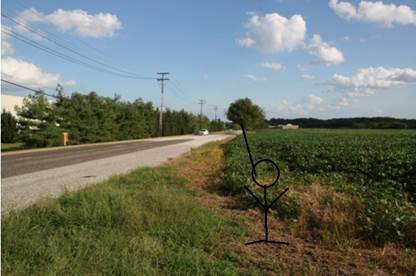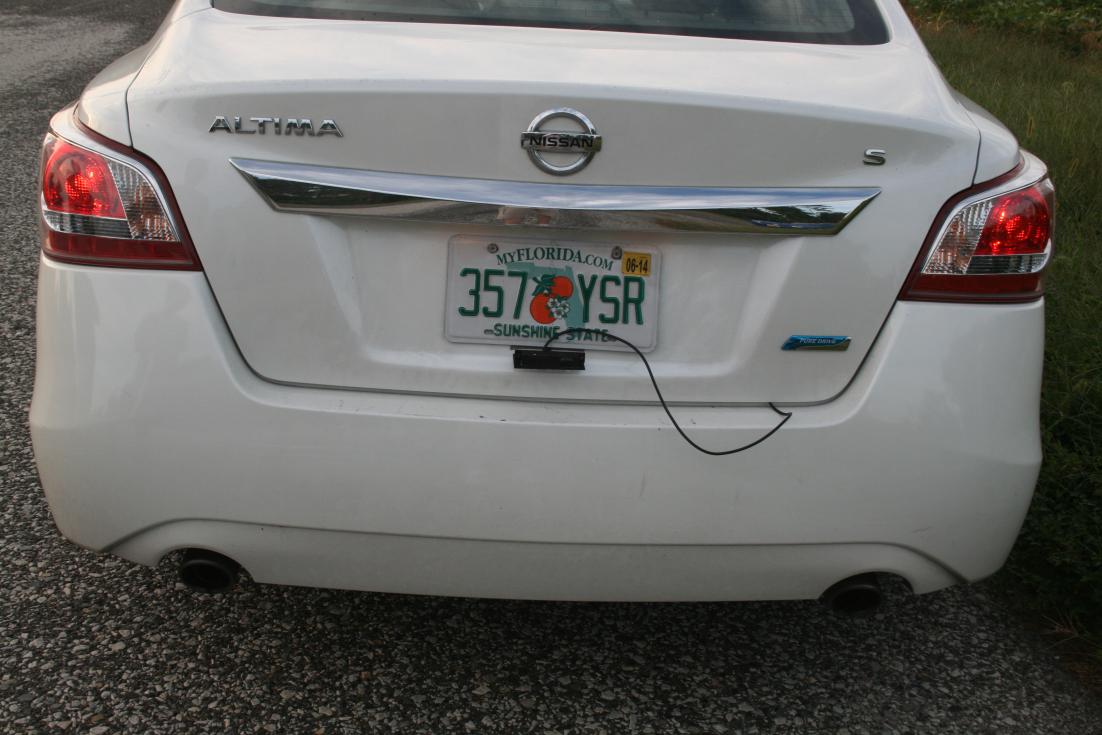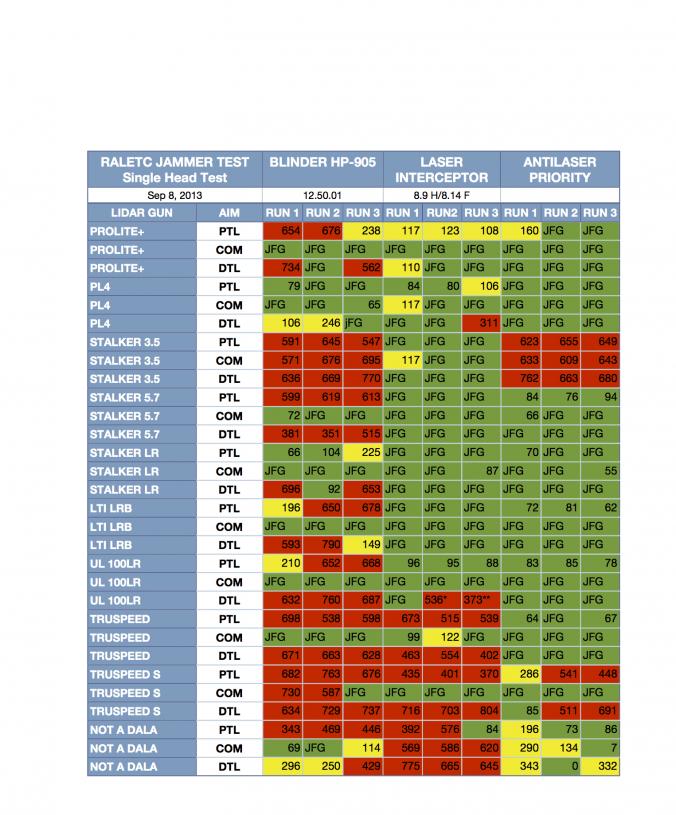-
Administrator


Raletc single head jammer test
Since I have been involved in LIDAR testing, we have always questioned how well a single jammer head would perform in testing. Due to time constraints for previous tests that I had participated in, a single head test was never done. Testing two or more jammers is a time consuming affair. For the testing we did on September 8, 2013, we knew testing three jammers would take all day. One night, I figured out how we can test jammers with only one head during our regular testing and lengthen the testing period too much. Just take one jammer head, install it on the rear of the test vehicle and shoot the car with LIDAR on the return trip.
THE TEST COURSE:
For the testing of the dual setups on the front of the testing vehicle the testing course was about 1000 feet, so the testing course for the single head setup should be about 1000 feet to. WRONG! Since we were not shooting the car from directly in front of the vehicle, but were positioned in the weeds off of the road, we had an obstruction that limited the test course to 800 feet. Meet the tree.

THE TEST VEHICLE:
We mounted one Jammer head on a Laser Interceptor bracket below the rear license plate. The jammer head was inspected to be level in both dimensions and parallel to the rear of the car.

RESULTS AND DISCUSSION:

Both the Laser Interceptor and the AntiLaser Priority performed very well. It should be noted that the Laser Interceptor does not effectively jam the “NOT A DALA (NAD)” Laser Interceptor needs to obtain this LIDAR, and I tried to have a conversation with Cliff to provide him with this LIDAR, but he hasn’t answered my calls. He did email me a FedEx shipping tag to send him the LIDAR, but I need to speak with him first. We did exchange a number of emails, where I stated that I would be willing to furnish him with the NAD, but due to Cliff accusing me of working for everyone from Dragon Eye Technologies to Blinder and other actions of his in an attempt to discredit me, I do not trust him. To ensure that this very expensive LIDAR gun would not be damaged and returned to me, I emailed Cliff that the only way I would allow him to have access to it, is that I would travel to meet him in Florida, and that he would pay for my transportation and hotel. I would pay for my own meals. He declined.
When a new or prospective user comes to this or other forum, and asks if one jammer head is sufficient to protect their car, the experience members have always said no. It is obvious that for the Blinder HP-905 this remains the case. The average punch through (PT) for the Blinder HP-905 was 361 feet, if you removed the data from the “NOT A DALA (NAD)” the average PT increases to 372 feet. I would not feel comfortable driving with this level of protection. When vehicle was targeted at the COM, the Blinder HP-905 performed well. With the exception of the Stalker 3.5, Truspeed S and with one exception, all COM shot were either JFG or under 100 feet, with 20 JFG, and 3 PTs of under 100 feet. When shooting the taillights the HP-905 did not protect the vehicle well enough.
The Laser Interceptor had an average PT of 151 feet, but if you excluded the NAD, the average PT drops to 106 feet. If you notice for the data on the LTI Ultralyte 100LR, which is a 100pps, gun for the driver’s taillight there are two readings of 536 and 373 which have asterisk. Both PTs gave an incorrect corresponding speed reading of 64mph and 11mph respectively. The results of the Truspeed S show us how important it is to have the jammer head as close to the targeted area as possible. This is one reason I run a three head set up. In this test when the taillights were targeted there were significant PTs. However when COM was targeted, the LI was JFG. If you look at the data from the dual test, where the jammer heads were closer to the headlights and not too far from the COM, the headlight PTs were significantly lower than taillight PTs. If you look at the dual COM results there were PTs of 182, 225 and 318 feet. My feeling is if you had a LI head directly below each headlight and one above the license plate we would see a significant reduction or elimination of PTs. The result from the Truspeed testing is what I had expected. With the Truspeed’s narrow beam, it is much harder for one jammer head to detect a shot that is being aimed away from its location. I expected the Stalker 3.5 to obtain significant PTs, due to the history of this LIDAR. Excellent perfomance for LI against the Stalker!
Because the Antilaser Priority had four receiving diodes, compared to two receiving diodes in the Laser Interceptor, I expected it to perform much better than the LI did. The Antilaser Priority had an average PT of 125 feet, but if you exclude the NAD, it drops a little to 120 feet. In this test, the Antilaser out performed the other jammers with the exception of the Stalker 3.5. Some will say that this is not an issue, because the Stalker 3.5 is not in service on the street. To me as an enthusiast, I am concerned about this result. I want to know what is the best, and I want to figure out why this happened, and what can be done to make the laser jammer perform better. All Stalkers have the same pulse rate. The differences between the versions are: 1. Filtering software to detect jamming, back round IR noise, and inaccurate readings. 2. Optics between the Stalker LR and the Stalker Lasers. 3. The different beam pattern of the earlier Stalker LIDAR, and the later Stalker LIDAR and LR. Which one of these differences is causing the Priority not to jam the 3.5 well, I am not sure, but I think it may have to do with the lower power output of the Priority compared to the LI, and the filtering firmware of the 3.5.
Last edited by Yellowcab; 10-23-2013 at 10:51 PM.
-
The Following 4 Users Say Thank You to Yellowcab For This Useful Post:
deano (11-14-2013), dinkydi (11-10-2013), midd (10-16-2014), shanetrainST (11-22-2013)
 Posting Permissions
Posting Permissions
- You may not post new threads
- You may not post replies
- You may not post attachments
- You may not edit your posts
-
Forum Rules






 Reply With Quote
Reply With Quote
Connect With Us